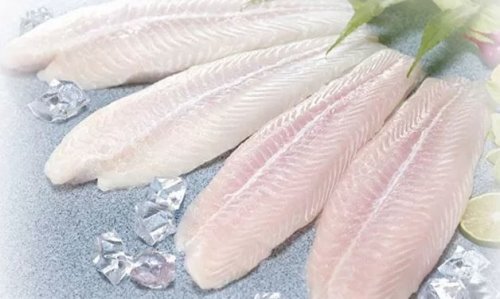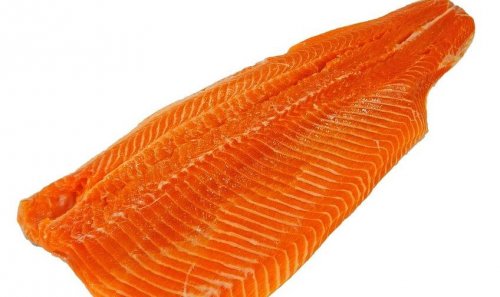Is it Harmful to Eat Basa Fish?

In recent times, the consumption of the basa fish has skyrocketed throughout the world. Its popularity is most likely due to it being inexpensive, delicious, and the fact that it doesn’t contain any sharp bones. Looking at it this way, it seems to be the perfect fish – but not everything is always as it seems.
While millions of families eat the basa fish regularly, opinions are starting to change as people are questioning its quality. Some have even raised doubts as to how eating this fish might be harmful to your health.
Can eating basa fish be harmful to your health?

What at first seemed like a dietary hero, has now been dragged into controversy. Currently, many people are questioning whether it’s wise to eat it. This is because, after making various analyses, experts have found traces of mercury in this fish. Although it’s true that the quantities found so far, have been very low, this discovery has worried consumers.
Most of the basa fish that we consume – practically 90 percent of it – comes from Vietnam. In this country, the fish farms and the conditions of their waters aren’t stringently controlled or monitored. As such, the water has been found to be highly polluted, and there are no quality assurances such as the ones you’d find in more developed countries.
See also: Fish Derivatives – Are They Healthy?
There have been various television documentaries alerting the public to the methods of raising these fish, which are then sold to other countries. However, once the fish reaches developed countries, its mercury levels are measured and inspected. That’s why it’s not been considered dangerous to eat it.
Still have doubts about eating basa fish?
More recently, consumers are becoming hesitant to eat basa fish. On the one hand, the government still allows this product into the country. But, at the same time, some supermarket chains have decided to remove it from their shelves.
The latest major controversy surrounding this fish has been among the dining halls in high schools. Many of them gave preference to food suppliers that didn’t sell basa fish and some would even boycott those that did. That’s when more people started to doubt the safety of this food. After all, if it was being banned in high schools, was it really safe to eat? This has created an even stronger backlash against the fish that was once extremely popular.
What do consumer organizations recommend?
In 2010, a consumer organization released a report regarding the consumption of basa fish. Their conclusions were alarming:
Of the 23 fish samples analyzed, four contained herbicide and nine contained mercury.
You may also like: Which Substances are Most Toxic for Your Body?
The quantity of the substances found in the basa fish samples. were within the minimum that’s permitted by the European Union. As such, food suppliers can still continue to sell this fish.
The conclusion that this consumer organization came to after completing the study, was that basa fish is safe for people to eat in moderation. They recommend that people do not consume it more than once per week. As such, it’s best to eat it infrequently and include other fish in your diet.
Alternatives to basa fish

If you’re a fish lover, here are some alternatives to basa fish that you can try:
Panga: white fish that’s low in cholesterol and is a great source of omega-3. It’s also inexpensive to buy.
Pompano: high in protein and can be used in a variety of dishes.
Trout: a versatile fish. You can cook it in the oven, you can stuff it, you can cook it on a griddle…however you choose to prepare it, it will taste delicious.
Sardines: rich in omega-3 and convenient– you can eat them out of the can or fresh.
When all of these fish are in season, they become significantly cheaper. We recommend that you pay attention to the offers in the supermarkets and that you familiarize yourself with their seasons. If you do, your diet will become even more varied and you’ll have some healthy alternatives to eating basa fish.
In recent times, the consumption of the basa fish has skyrocketed throughout the world. Its popularity is most likely due to it being inexpensive, delicious, and the fact that it doesn’t contain any sharp bones. Looking at it this way, it seems to be the perfect fish – but not everything is always as it seems.
While millions of families eat the basa fish regularly, opinions are starting to change as people are questioning its quality. Some have even raised doubts as to how eating this fish might be harmful to your health.
Can eating basa fish be harmful to your health?

What at first seemed like a dietary hero, has now been dragged into controversy. Currently, many people are questioning whether it’s wise to eat it. This is because, after making various analyses, experts have found traces of mercury in this fish. Although it’s true that the quantities found so far, have been very low, this discovery has worried consumers.
Most of the basa fish that we consume – practically 90 percent of it – comes from Vietnam. In this country, the fish farms and the conditions of their waters aren’t stringently controlled or monitored. As such, the water has been found to be highly polluted, and there are no quality assurances such as the ones you’d find in more developed countries.
See also: Fish Derivatives – Are They Healthy?
There have been various television documentaries alerting the public to the methods of raising these fish, which are then sold to other countries. However, once the fish reaches developed countries, its mercury levels are measured and inspected. That’s why it’s not been considered dangerous to eat it.
Still have doubts about eating basa fish?
More recently, consumers are becoming hesitant to eat basa fish. On the one hand, the government still allows this product into the country. But, at the same time, some supermarket chains have decided to remove it from their shelves.
The latest major controversy surrounding this fish has been among the dining halls in high schools. Many of them gave preference to food suppliers that didn’t sell basa fish and some would even boycott those that did. That’s when more people started to doubt the safety of this food. After all, if it was being banned in high schools, was it really safe to eat? This has created an even stronger backlash against the fish that was once extremely popular.
What do consumer organizations recommend?
In 2010, a consumer organization released a report regarding the consumption of basa fish. Their conclusions were alarming:
Of the 23 fish samples analyzed, four contained herbicide and nine contained mercury.
You may also like: Which Substances are Most Toxic for Your Body?
The quantity of the substances found in the basa fish samples. were within the minimum that’s permitted by the European Union. As such, food suppliers can still continue to sell this fish.
The conclusion that this consumer organization came to after completing the study, was that basa fish is safe for people to eat in moderation. They recommend that people do not consume it more than once per week. As such, it’s best to eat it infrequently and include other fish in your diet.
Alternatives to basa fish

If you’re a fish lover, here are some alternatives to basa fish that you can try:
Panga: white fish that’s low in cholesterol and is a great source of omega-3. It’s also inexpensive to buy.
Pompano: high in protein and can be used in a variety of dishes.
Trout: a versatile fish. You can cook it in the oven, you can stuff it, you can cook it on a griddle…however you choose to prepare it, it will taste delicious.
Sardines: rich in omega-3 and convenient– you can eat them out of the can or fresh.
When all of these fish are in season, they become significantly cheaper. We recommend that you pay attention to the offers in the supermarkets and that you familiarize yourself with their seasons. If you do, your diet will become even more varied and you’ll have some healthy alternatives to eating basa fish.
All cited sources were thoroughly reviewed by our team to ensure their quality, reliability, currency, and validity. The bibliography of this article was considered reliable and of academic or scientific accuracy.
- Organización de Consumidores y Usuarios (OCU). (2017). Contaminantes en los filetes de pescado. https://www.ocu.org/alimentacion/alimentos/noticias/contaminantes-en-los-filetes-de-pescado488274
- Rodríguez, M., Gutiérrez, Á. J., Rodríguez, N., Rubio, C., Paz, S., Martín, V., Revert, C., & Hardisson, A. (2018). Assessment of mercury content in Panga (Pangasius hypophthalmus). Chemosphere, 196, 53–57. https://doi.org/10.1016/j.chemosphere.2017.12.137
- Simon R. Bush, Nguyen Tri Khiem y Le Xuan Sinh. (2009). REGULACIÓN DE LAS DIMENSIONES AMBIENTALES Y SOCIALES DE LA PRODUCCIÓN DE PANGASIUS EN VIETNAM: UNA REVISIÓN∗, Aquaculture Economics & Management, 13:4, 271-293, DOI: 10.1080/13657300903351594
This text is provided for informational purposes only and does not replace consultation with a professional. If in doubt, consult your specialist.








